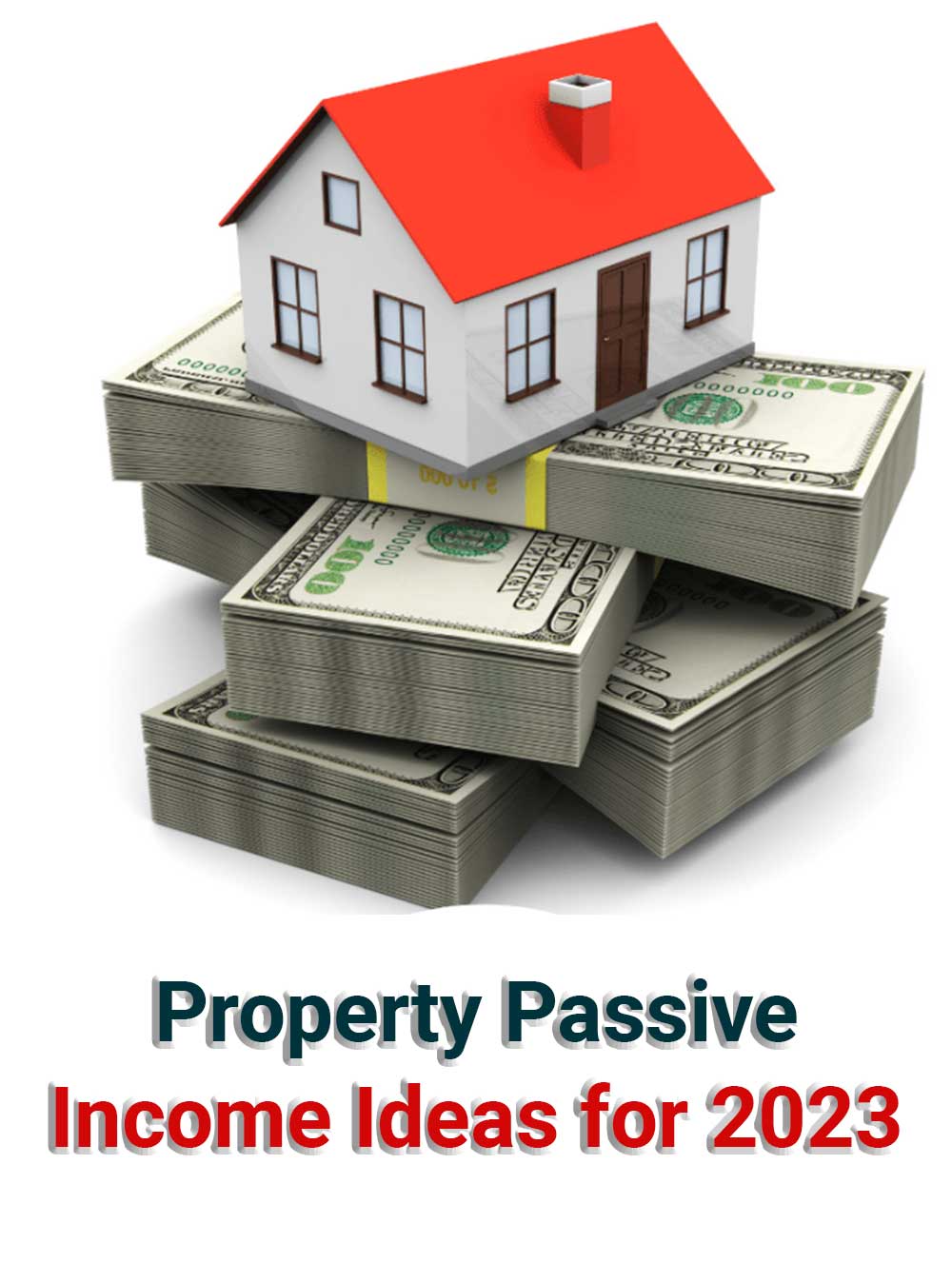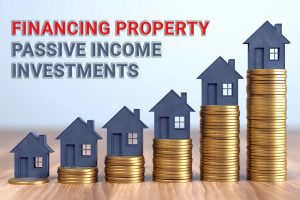
Imagine a life where you’re not constantly working to make a living, but your investments are doing the hard work for you. That’s the power of property passive income, a game-changing strategy that can help you achieve financial freedom and live life on your own terms. In this blog post, we will delve into various strategies, real-life success stories, and practical tips to help you unlock the full potential of property investments as a source of passive income.
From residential rental properties to commercial real estate, there are numerous opportunities to build a steady stream of income without the need for full-time labor. We will also discuss how technology can streamline property management, the tax implications of property passive income, and the importance of diversifying your property portfolio.
Key Takeaways
- Property passive income is an effective wealth-building strategy that can generate income without active daily management.
- Strategies for successful property passive income include investing in desirable areas, diversifying investment portfolio, and leveraging equity from existing properties.
- Real life success stories demonstrate the potential to achieve financial freedom through property passive investments.
The Power of Property Passive Income

- Dividend stocks
- Mutual funds
- Rental properties
- Businesses where the income recipient doesn’t materially participate
Investing in property can help generate a substantial passive income. This income can be acquired from either long-term rental or short-term holiday lets. With the right strategies, such as the buy and hold strategy, house flipping, rentvesting, and rent-to-own agreements, you can create a steady stream of passive income that can even surpass the returns from traditional investments like high yield savings accounts and stock market investments.
Residential Rental Properties
Residential rental properties are a popular choice for property passive income investors. With the ability to generate a consistent source of rental income, these investments can be particularly advantageous for those with some DIY capabilities. By making minor adjustments to the property, such as modernizing a kitchen or replacing a deteriorating pergola, investors can significantly increase the value of the property while also being able to attract higher-quality tenants and charge a higher rate of rent.
Owning rental properties in a rising housing market is a passive income idea that’s likely to experience an increase in value, thus resulting in higher profits should the property be sold in the future. However, it’s essential to take certain steps to generate revenue from a rental property. Advertising the property and ensuring that it is kept in good condition through regular maintenance and cosmetic improvements are crucial for earning passive income from a rental property.
Investing in residential rental properties does come with its challenges, such as the physical deterioration of the property and the lack of respect from tenants. Council rates and insurance are ongoing costs that must be managed. Additionally, other costs may arise during the ownership of the property. To overcome these challenges, it’s advised to pay off one’s own home first and procure the investment property with cash, rather than relying on a savings account, before purchasing a rental property.
Commercial Real Estate

However, there are risks associated with commercial real estate investments. Should a tenant vacate, it may take a substantial amount of time to secure a new one. Additionally, the values of A-REITs may be more volatile as they are listed on the stock market. To overcome these risks, investors can diversify their investments across various property sectors and regions and consider other passive income options related to commercial real estate, such as peer-to-peer lending and investing in large development projects as a limited partner.
Strategies for Successful Property Passive Income

- Invest in desirable areas and neighborhoods.
- Diversify your investment portfolio.
- Leverage the equity from existing properties.
- Undertake thorough research before making any investment decisions.
- Consider engaging a property management company to handle the day-to-day operations of your properties.
By implementing these passive income strategies, investors can optimize their chances of success in generating passive income from properties.
It’s important to note that generating passive income equivalent to active income obtained from active efforts requires a considerable amount of effort initially. By being proactive and adaptive in their approach, investors can overcome challenges and capitalize on opportunities to grow their passive income streams, create passive income, and ultimately earn passive income through various passive income ideas.
Buy and Hold Strategy
The buy and hold strategy is a long-term investment approach that involves buying and retaining properties for rental income and potential capital gains. This strategy can provide a steady rental income and various tax benefits, making it an attractive option for many investors.
However, the buy and hold strategy requires a substantial initial investment and carries the risk of vacancy and continuous maintenance. To mitigate these risks, investors should conduct thorough research on the local market and establish practical expectations for their investments.
House Flipping
House flipping is a real estate strategy that involves purchasing properties, making improvements, and reselling them for a profit within a brief timeframe. This strategy can be a lucrative source of passive income if executed correctly, with the potential for significant returns on investment.
The process of house flipping involves locating a property, evaluating its potential, performing renovations, and disposing of it for profit. The potential risks of house flipping include the possibility of incurring financial losses due to unanticipated costs or market conditions. To overcome these risks, investors should conduct thorough research, budget for unexpected expenses, and carefully evaluate the potential of each property before investing.
Rentvesting
Rentvesting is a strategy whereby investors rent their primary residence while simultaneously owning and renting out investment properties. This approach provides investors with the opportunity to capitalize on the potential for capital growth in the property market without having to take on a hefty mortgage.
Although rentvesting can be a profitable strategy, it may be more costly than acquiring a property in its entirety, as investors will need to pay rent on their primary residence in addition to mortgage payments on their investment property.
To overcome the challenges associated with rentvesting, investors should:
- Undertake research into the local market
- Diversify their portfolio
- Have a plan in place for how the tenant will be able to acquire the property at the conclusion of the lease.
Rent-to-Own Agreements
Rent-to-own agreements are contracts between a tenant and a landlord that provide the tenant with the opportunity to rent a property for a predetermined period of time, with the option to purchase the property at the conclusion of the lease. These agreements can be advantageous for both tenants and landlords, providing a consistent source of income with the potential for a higher return on investment.
However, rent-to-own agreements can also be precarious for both parties, with the risk of the landlord not abiding by the agreement or the tenant not being able to fulfill the payments.

Leveraging Technology for Property Passive Income

Property management software can be utilized to manage rental properties, monitor tenant payments, and facilitate rent collection. Online platforms for property investing can be utilized to locate and evaluate potential investments, as well as network with other investors. By leveraging technology, investors can overcome common challenges in property passive income and enhance their investment strategies.
Property Management Software
Property management software is a program designed to assist property managers in overseeing residential and commercial properties for their owners. This software facilitates the optimization of processes such as:
- Rent collection
- Maintenance requests
- Lease management
- Financial reporting
By utilizing property management software, property managers can become more efficient, decrease mistakes, and save both time and money.
Online Platforms for Property Investing
Online platforms for property investing are websites and applications that provide access to the process of investing in real estate. These platforms offer a range of real estate investments, such as rental properties, commercial real estate, and more. Some popular online platforms for property investing include RealtyMogul, Fundraise, Roofstock, and DiversyFund.
By utilizing these platforms, investors can greatly expand their investment opportunities and generate passive income. Investing in real estate through online platforms can be a great way to diversify your portfolio.
Tax Implications of Property Passive Income

Before selecting a retirement plan for self-employed individuals, it’s important to evaluate the distinctions between the two account types. For example, the solo 401(k) permits you to deposit up to 100 percent of your income into the account, up to the annual maximum, whereas the SEP IRA allows you to contribute at a rate of 25 percent.
By understanding the tax implications of your property passive income investments, you can make informed decisions that will enhance your overall financial success.
Diversifying Your Property Portfolio

- Reduce the likelihood of losses caused by market fluctuations and other external factors
- Increase the potential for higher returns
- Enhance the overall stability of your portfolio
In this section, we will explore geographic diversification and asset class diversification as key strategies for diversifying your property portfolio. Diversifying across various asset classes, such as residential rental properties, commercial real estate, and other forms of investments, can help to distribute the risk of losses arising from market fluctuations or other factors in a single asset class.
By implementing a diverse investment strategy, you can safeguard your investment and maximize returns.
Geographic Diversification
Geographic diversification is the practice of investing in properties in various geographic locations. This serves to disperse the risk of losses attributable to market fluctuations or other factors in an individual area. By investing in multiple markets, you can decrease risk and increase the possibility of returns.
To successfully implement geographic diversification, it’s crucial to:
- Conduct thorough research on each market
- Be cognizant of the varying risks and potential returns associated with each
Diversify investments across different asset classes and sectors to further lessen risk and optimize returns
Asset Class Diversification
Asset class diversification is the process of investing in a variety of asset classes, including:
- Stocks
- Bonds
- Real estate
- Commodities
This is done in order to mitigate risk and optimize returns. Diversifying across various asset classes can assist in mitigating risk, as distinct asset classes tend to exhibit varied behavior in diverse market conditions. It can also aid in optimizing returns, as different asset classes can furnish disparate levels of returns.
An example of asset class diversification would entail investing in a combination of:
- Stocks
- Bonds
- Real estate
- Commodities
By implementing a diverse investment strategy across various asset classes, you can protect your investment and maximize your returns.
Financing Property Passive Income Investments

- Hard money loans
- Refinancing mortgages
- Utilizing online platforms like Groundfloor, which is one of the oldest platforms for establishing a marketplace for hard money loans.
Hard money loans are real estate loans utilized for fix and flip projects or short-term bridge loans. Refinancing a mortgage involves replacing an existing mortgage with a new one that has different terms, typically with the purpose of saving money.
By understanding the various financing options available for property passive income investments, you can choose the best option for your needs and enhance your investment strategy.
Overcoming Common Challenges in Property Passive Income

In this section, we will discuss strategies for managing tenants and maintaining properties, as well as share insights on how to overcome common challenges in property passive income. By implementing these strategies, you can safeguard your investment, enhance your returns, and achieve financial freedom through property investments.
Tenant Management
Effective tenant management is crucial for maintaining a steady passive income stream from your rental properties. Strategies for locating and evaluating tenants include advertising on rental listing websites, conducting background checks, and interviewing prospective tenants. To ensure timely rent collection and prompt response to maintenance requests, landlords may establish automatic payments and provide incentives for timely rent payments.
Proactive communication and clear expectations are essential in addressing any issues or disputes that may arise during the tenancy. By employing effective tenant management strategies, you can maintain positive relationships with your tenants and ensure a steady passive income stream from your rental properties.
Property Maintenance
Property maintenance is essential for protecting your investment and maximizing returns. Regular inspections, timely repairs, and keeping the property in good condition are crucial for maintaining its value and attractiveness to potential tenants. By implementing a system for tracking and scheduling maintenance tasks, assigning tasks to the relevant personnel, and leveraging technology to automate certain tasks, you can effectively manage property maintenance and ensure the successful operation of your rental properties.
In addition to regular maintenance, it’s important to have a plan in place for responding to emergency maintenance requests. By addressing maintenance issues promptly and efficiently, you can protect your investment, maximize your returns, and ensure the satisfaction of your tenants.
Real-Life Success Stories of Property Passive Income Investors

Another inspiring story is that of an investor who was able to retire prematurely after investing in rental properties. By leveraging various strategies, such as:
- the buy and hold strategy
- house flipping
- rentvesting
- rent-to-own agreements
This investor was able to generate a substantial passive income through their high yield savings account, which allowed them to achieve financial independence.
These success stories showcase the potential of property passive income investments, inspiring us to take action and pursue our own financial freedom. With the right strategies, persistence, and dedication, you too can achieve success in property passive income and live life on your own terms.
Summary
In conclusion, property passive income is a powerful strategy that can help you achieve financial freedom and live life on your own terms. By exploring various strategies such as residential rental properties, commercial real estate, buy and hold, house flipping, rentvesting, and rent-to-own agreements, as well as leveraging technology and diversifying your property portfolio, you can create a consistent source of passive income and secure your financial future. The inspiring success stories of property passive income investors serve as a testament to the potential of this investment approach, motivating us to take action and achieve our own financial independence.
Frequently Asked Questions

How do you get passive income from property?
Generating passive income through property can be done through a positive gearing strategy, choosing the right property type, selecting an appropriate location, and attracting good tenants.
Equity from the increasing value of the property is also a potential source of passive income.
How to make $1,000 a month passive income?
Earn $1,000 each month in passive income by investing in dividend growth stocks, crowdfunded real estate, credit card sign-up bonuses, high yield savings accounts, certificates of deposit, stocks/bonds/REITs/BDCs, robo-advisors, the stock market, YouTube channels, online courses, or creating leads for another business.
What is passive income in Australia property?
Passive income from Australian property includes rental income, dividends from stocks or bonds, and interest from savings accounts or CDs. This is a form of income that is earned with little or no effort, compared to active income from salaries or wages.
What is a good asset for passive income?
Investing in dividend-paying stocks, high-yield savings accounts, index funds, mutual funds, exchange-traded funds (ETFs), physical metals, and even fine art are all good options for passive income.
With consistent monitoring of your investments, you can reap the benefits of consistent streams of income without much effort.
What are some examples of property passive income investments?
Property passive income investments include residential rental properties, commercial real estate, and businesses where the income recipient does not materially participate.
These investments can provide a steady stream of income, but they also come with risks. It is important to understand the potential risks and rewards of each type of investment before making a decision.
.












